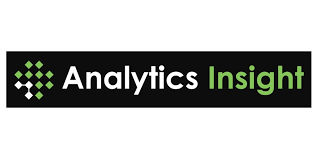AI, Policy Shifts, and Market Realignments: A Comprehensive Look at Tech in September 2025
Author: The Tech Chronicle

As September 2025 draws to a close, the tech world finds itself at a crossroads where artificial intelligence, policy decisions, and market dynamics converge to shape the near future. AI is moving beyond a specialized innovation to become a pervasive force that informs investment strategies, corporate planning, and consumer experiences. In the pages that follow, we synthesize reporting from Analytics Insight, Morningstar, Nasscom, Huawei, The Times of India, The News Minute, and other outlets to construct a coherent portrait of a sector in rapid transition. The week’s developments reveal how AI-powered tools are reshaping everything from on-chain finance and cloud infrastructure to online discourse and cultural debate. The Ozak AI presale, for example, is one data point illustrating how AI-driven capabilities are now a core differentiator in even the most speculative corners of the technology economy. At the same time, policy issues—such as visa fee changes and regulatory scrutiny—underscore that technology’s growth depends as much on governance and talent mobility as on technical breakthroughs. Taken together, these stories illuminate a sector where innovation, risk, and opportunity are increasingly interwoven across borders, industries, and digital ecosystems.
Ozak AI presale and investor fervor: Among emerging tech narratives, Ozak AI stands out for attracting significant early funding while positioning itself at the intersection of artificial intelligence and blockchain. Analysts cited by Analytics Insight note that the project has raised roughly $3.3 million in its pre-sale at a token price near $0.012. While presales are inherently speculative, the momentum around Ozak AI reflects a broader appetite for AI-enabled infrastructure in decentralized finance, smart contracts, and on-chain governance. Proponents argue that AI-driven optimization can improve security, throughput, and decision-making across networks, potentially lowering costs for developers and users alike. Critics, however, warn that such rounds carry elevated risk given market volatility, evolving regulation, and the absence of long-track records. The episode nonetheless signals how AI is increasingly treated as a layer that can accelerate the capabilities of blockchain ecosystems, spurring questions about token economics, liquidity, and the alignment of incentives among developers, investors, and users. In a market where attention often travels fastest to the newest AI-enabled product, Ozak AI’s presale is a touchstone for how AI’s promise translates into early capital formation.
Beyond one project, a broader picture is emerging in technology markets as of mid-September 2025. Morningstar coverage, alongside industry voices, emphasizes that while megacap tech remains a cornerstone of many portfolios, nimble small-cap technology plays have demonstrated resilience in a period of macro uncertainty. Investors weigh the impact of central-bank policy on rates, liquidity, and the cost of capital against the transformative potential of AI–enabled software, semiconductors, cloud platforms, and edge computing. In this environment, companies that articulate a clear AI strategy—grounded in governance, risk management, and measurable product value—tend to command more durable valuations. The broader implication is clear: AI is no longer a speculative tailwind but a core operational driver that shapes how firms compete, how funds allocate risk, and how regulators monitor market integrity. As this evolution unfolds, market participants will increasingly demand transparency about data usage, model governance, and the real-world benefits that AI promises to deliver.

Ozak AI presale underscores investor appetite for AI-powered on-chain tooling.
Nasscom warns of talent-visa frictions: In a move that could reshape the R&D map of North America and India alike, Nasscom highlighted concerns over a newly announced $100,000 filing fee for H-1B visas, arguing that the timeline and cost could undermine America’s onshore innovation ecosystem. A statement from the organization warned that such adjustments may disrupt business continuity, delay client projects, and hamper collaboration with global teams that rely on high-skilled engineers, data scientists, and software developers. The fear is not just about immediate costs but about how talent flows—where engineers study, train, and work—and how those flows influence competitiveness in software, AI, and other advanced sectors. While proponents of visa reforms cite national security, wage protection, and easier oversight, industry groups contend that effective policy must balance these aims with the practical realities of global talent markets. In effect, these discussions determine where critical AI and digital infrastructure work happens, and who can lead it.
Huawei Connect 2025 and the digitization agenda: At Huawei Connect 2025 in Shanghai, the company and its global partners unveiled more than 30 benchmark showcases illustrating digital and intelligent transformation in data communications. The showcases highlighted practical deployments of AI-enabled networks, enhanced 5G/6G integration, and edge-to-cloud architectures designed to improve latency, energy efficiency, and security for smart factories, transport systems, and urban networks. Analysts noted a shift from flashy pilots to scalable, interoperable solutions that can be standardized across industries, reducing fragmentation and accelerating return on investment. Huawei’s emphasis on field-proven best practices signals a broader industry push toward reliable AI-enabled infrastructure that can support autonomous operations, predictive maintenance, and real-time analytics. This trend stands in contrast to purely theoretical AI narratives and underlines the role of industry collaboration, standards development, and cross-border supply chains in sustaining momentum for digital transformation across the global economy.

Huawei Connect 2025 showcases more than 30 global benchmark showcases for digital and intelligent transformation in the data communication domain.
Thinking with machines: AI ethics and the future of humanities: A thoughtful examination from The News Minute argues for a humanities-informed approach to AI development, one that places ethics, culture, and human-centered design at the heart of technology strategy. The piece argues that engineers alone cannot resolve questions of bias, representation, and social impact; instead, interdisciplinary collaboration—with philosophy, literature, history, and critical theory—can illuminate the broader consequences of algorithmic decision-making. The proposed framework envisions governance that translates ethical insight into concrete product features, from data curation and consent management to accessible design and inclusive testing. While industry leaders may champion speed and scale, the essay reminds us that sustainable AI depends on social legitimacy and accountability. This perspective is increasingly echoed by universities, research institutes, and major tech firms that are investing in ethics review processes, responsible-AI guidelines, and public-facing governance mechanisms aimed at aligning innovation with public values.
Consumer devices and the AI-inflected market: The consumer electronics sector remains buoyant as manufacturers push AI-enabled experiences and broader connected ecosystems. In India, Xiaomi announced what many are calling the biggest Diwali sale, with discounts up to 60% on a wide range of devices including smartphones, TVs, tablets, wearables, and home electronics, available online and via retail partners. The promotion reflects both seasonality and the ongoing transition to AI-powered software within devices, enabling features like on-device AI assistants, smarter camera systems, and efficient battery management. Separately, Samsung rolled out festive offers on the Galaxy Watch 8 Series and other wearables, underscoring retailers’ emphasis on bundling devices with services, apps, and premium ecosystems. Taken together, these consumer promotions highlight continued momentum in hardware adoption even as investors focus on AI-enabled services such as intelligent cloud platforms, enterprise automation, and AI-assisted content curation. The consumer side of the AI revolution is growing, accelerating data generation, demand for better hardware, and the software ecosystems that tie devices to daily life and work.

Sam Altman discusses AI’s impact on jobs and the workforce.
Elon Musk’s vision for X to go fully AI-driven by November: A high-profile development in September centers on Elon Musk’s suggestion that X will be fully AI-driven by November. The plan envisions deeper feed personalization, smarter moderation workflows, and new AI-assisted tools designed to surface relevant content while reducing noise. Industry observers acknowledge the opportunity to reinvent platform economics through AI, with potential gains in user engagement efficiency and safer, more responsive content curation. Yet the path is fraught with governance risks: ensuring transparency in AI decision processes, guarding against misinformation amplification, protecting user privacy, and preventing the erosion of user autonomy in a more automated environment. Experts caution that a rapid move toward AI-first platform design requires robust guardrails, clear accountability, and ongoing public dialogue about how data fuels personalized experiences. If executed with care, X’s AI drive could alter the economics of social media and set a precedent for platform-level AI across the sector.
Conclusion: looking ahead to an AI-enabled economy: Taken together, the September 2025 crosscurrents point to a world where AI is becoming infrastructural—embedded in financial systems, immigration policy, industrial ecosystems, and everyday devices—rather than remaining a niche capability. Investors are recalibrating their exposure to AI-enabled growth while maintaining risk controls, policymakers are negotiating how to balance talent mobility, data governance, and national competitiveness, and businesses are expanding AI-infused product lines while embedding ethics into governance. The near-term prospects depend on three critical magnets: credible, enforceable AI governance that earns user trust; scalable, interoperable AI infrastructure that lowers the marginal cost of experimentation for developers; and a talent ecosystem that can move quickly across borders in a predictable policy environment. If governance and innovation advance in tandem, AI could deliver meaningful improvements in productivity and inclusion, while ensuring that technology’s benefits are broadly shared rather than concentrated among a few players. The road ahead remains complex, but the potential rewards for well-coordinated action are substantial.